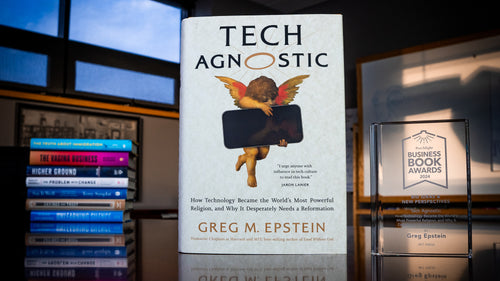Pulling
With developments in technology, and the effects they are having on our lives; how we think, research, question, and seek, there's a lot to be said about how we're changing how we work and interact. Two recent books address that through the definition of 'Pull,' David Siegel's Pull: The Power of the Semantic Web to Transform Your Business and John Hagel III, John Seely Brown, and Lang Davison's The Power of Pull: How Small Moves, Smartly Made, Can Set Big Things in Motion.
Siegel's book talks about how the web is changing, and how it will infiltrate more and more into our lives though our interaction with it (working in the cloud) and physical material (ex.
With developments in technology, and the effects they are having on our lives; how we think, research, question, and seek, there's a lot to be said about how we're changing how we work and interact. Two recent books address that through the definition of 'Pull,' David Siegel's Pull: The Power of the Semantic Web to Transform Your Business and John Hagel III, John Seely Brown, and Lang Davison's The Power of Pull: How Small Moves, Smartly Made, Can Set Big Things in Motion.
 Siegel's book talks about how the web is changing, and how it will infiltrate more and more into our lives though our interaction with it (working in the cloud) and physical material (ex. buildings ordering their own supplies). It's important to understand these changes in order to adapt our businesses to them. Because, as Siegel states, "It isn't going to be easy, and you don't have any choice." As unpleasant as that sounds, our jobs will change drastically, and the effort of change will reveal many rewards with how we interact with customers, provide better services, and survive in the world going forward.
The lack of choice that Siegel mentions is reflected in Hagel, Brown, and Davison's focus on how the concept of pull requires personal commitment, ambition, and voluntary action. The author's state:
Siegel's book talks about how the web is changing, and how it will infiltrate more and more into our lives though our interaction with it (working in the cloud) and physical material (ex. buildings ordering their own supplies). It's important to understand these changes in order to adapt our businesses to them. Because, as Siegel states, "It isn't going to be easy, and you don't have any choice." As unpleasant as that sounds, our jobs will change drastically, and the effort of change will reveal many rewards with how we interact with customers, provide better services, and survive in the world going forward.
The lack of choice that Siegel mentions is reflected in Hagel, Brown, and Davison's focus on how the concept of pull requires personal commitment, ambition, and voluntary action. The author's state:
 "Pull is a very different approach, one that works at three primary levels, each of which builds on the others. At the most basic level, pull helps us to find and access people and resources when we need them. At a second level, pull is the ability to attract people and resources to you that are relevand and valuable, even if you wer not even aware before that they existed. Think here of serendipity rather than search. Finally, in a world of mounting pressure and unforeseen opportunities, we need to cultivate a third level of pull-the ability to pull from within ourselves the insight and performance required to more effectively achieve our potential."
The lesson here is that push programs tell you what to do, and pull programs give you the opportunity to coordinate your own knowledge and experience. Both books provide great insight into the quickly changing world of information. On the surface, they are books about technology and business, but on a deeper level, reveal much more about the future of communication, culture, and people.
"Pull is a very different approach, one that works at three primary levels, each of which builds on the others. At the most basic level, pull helps us to find and access people and resources when we need them. At a second level, pull is the ability to attract people and resources to you that are relevand and valuable, even if you wer not even aware before that they existed. Think here of serendipity rather than search. Finally, in a world of mounting pressure and unforeseen opportunities, we need to cultivate a third level of pull-the ability to pull from within ourselves the insight and performance required to more effectively achieve our potential."
The lesson here is that push programs tell you what to do, and pull programs give you the opportunity to coordinate your own knowledge and experience. Both books provide great insight into the quickly changing world of information. On the surface, they are books about technology and business, but on a deeper level, reveal much more about the future of communication, culture, and people.



